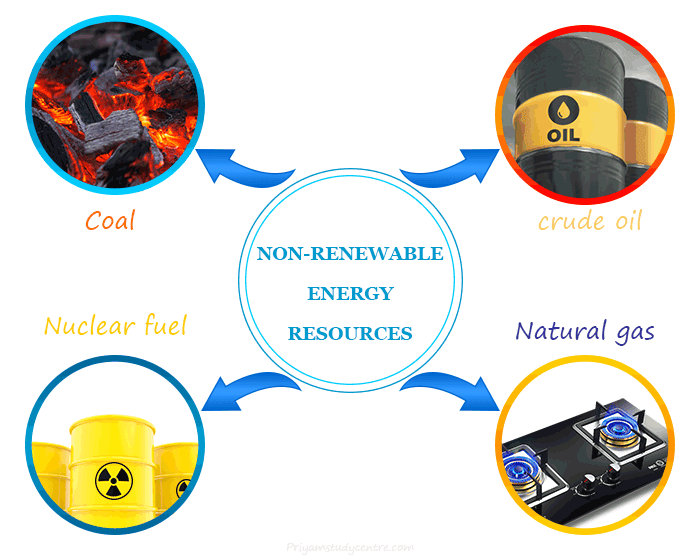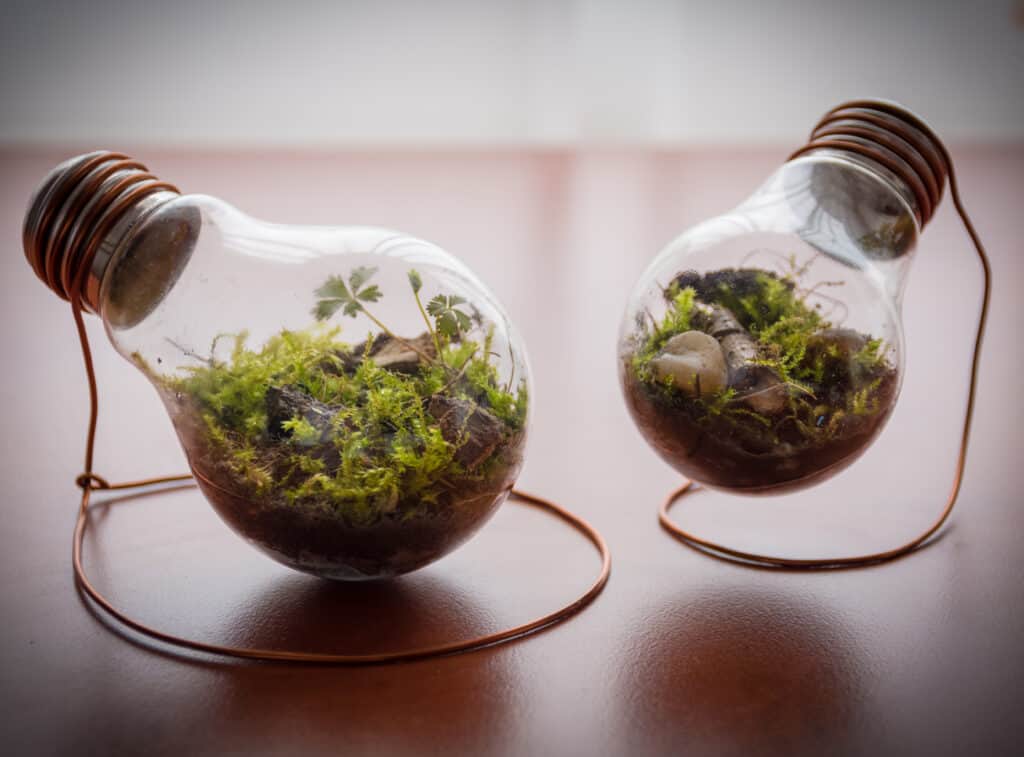[ad_1]
Energy has been an indispensable part of society. From walking, and driving to charging our smartphones, every action encompasses one or the other form of energy in our day-to-day life. Over the years, mankind has ventured and found new possibilities for harnessing energy for their benefit.
However, have we ever stopped and reconsidered our decision for once and measured how our activities are affecting the planet and what repercussions we might face if proper steps are not undertaken at the behest? How your energy consumption changes can make a difference to the planet are discussed in this article.


Studies show that household tech costs about 0.14 USD per kWh (kilowatt-hours), which gets calculated on the basis of average operations conditions. According to the EPA (Environmental Protection Agency), each gallon of gasoline is equivalent to 33.7 kWh of electricity. There is also growing concern about the high amounts of energy that is needed to manufacture EV or Electric Vehicles batteries.
It has even been found that if global YouTube watching which consumes a lot of energy is turned off for a week, then it can power up some small countries across the world for about a year.
Today, world energy supply and consumption have increased hugely, which has burdened the planet with undue pressure. From being a major contributor to pollution, climatic change, and greenhouse gas emissions, over-energy consumption has put our environment and ecosystem at stake if adequate awareness is not made at a faster rate.
But before we delve deeper and look for ourselves at how our activities are impacting the planet, what are the effects of energy, and how we can contain its consumption, let us understand what is meant by energy consumption in its entirety.
What is Energy Consumption?


Energy consumption refers to the total amount of energy that is needed for a particular process or activity to get done. This gets measured in kilowatt-hours (kWh). It involves the consumption of gas, oil, diesel, electricity, and biomass.
Overconsumption of energy leads to climate change and can be a cause of several harmful environmental impacts that can have a long-term impact on mankind.
Sources of World Energy Consumption
Energy sources are of two types, Renewable and Non-Renewable namely. Let us take a closer look at this.
1. Renewable Energy


Renewable energy is derived from natural sources that get replenished at a higher rate compared to the rate they get consumed. These include sunlight, wind, water, biomass, etc., that is considered clean energy and is in abundance around us.
2. Non-Renewable Energy


Non-renewable energy comes from sources that do not get replenished. These were formed over the years as prehistoric animals and plants died and got buried in soil with one layer covering them after another. As such, the maximum non-renewable sources of energy are fossil fuels, which include natural gas, coal, and petroleum.
According to the European Environment Agency, two-thirds of energy consumption occurs from burning fossil fuels. Today, countries are increasingly becoming aware of this aspect and are using renewable energy for a sustainable future.
Energy Consumption Types
There exist different types of energy consumption that occur in our day-to-day life by us, sometimes knowingly and many times unknowingly.
They are as follows:-
1. Chemical Energy Consumption
These types of energies are contained within bonds between molecules. The sources of such energy are coal, gasoline, natural gas, and batteries.
2. Electrical Energy Consumption
Electrical energy is present within tiny particles that are charged, which are known as electrons. The electricity used in our homes and the lightning bolt are some examples of electrical energy.
3. Kinetic Energy Consumption
Any moving object consumes this type of energy. For example- running, climbing, etc., uses kinetic energy.
4. Gravitational Energy Consumption
Gravitational energy is one that surrounds the earth. It is the energy that is consumed when we fall or when we ride uphill.
5. Nuclear Energy Consumption
This type of energy gets saved inside tiny atoms that remain invisible. These atoms make up the entire universe. The fission reaction that happens in nuclear plants forms enough energy to power up huge cities.
6. Solar Energy Consumption
Solar energy consumption occurs from the movement of light.
7. Sound Energy Consumption
This type of energy consumption occurs when an object is made to vibrate, which leads to the production of sound.
8. Thermal Energy Consumption
Thermal energy consumption occurs when molecules get moved. The energy coming from fire is an example of thermal energy.
What is the Global Energy Consumption Ratio?
The need for energy has been growing over the years. This has been particularly true for developing countries. If we look at the world’s demand for energy, we will find that it has tripled in the past 50 years. While much of this demand is said to be put forward by the rapidly booming economies of India and China, other developed countries, especially those in Europe, are trying to meet their energy requirements by expanding the consumption of renewable sources. However, at present, though a small percentage, renewable energy is growing at a fast pace, specifically wind energy.
Here is an energy consumption chart to help you understand global energy consumption over the years:-
Global Energy Consumption by Source
The energy that we need to carry out our day-today activities comes from a variety of sources. However, the maximum chunk for global consumption comes from fossil fuels which include coal, natural gas and oil. They account for about 81% of the global energy we use.
Other sources include hydro, nuclear, and solar amongst others. These non-fossil fuel sources currently form about 19% of the total energy supply across the globe.
Well, here is a chart of world energy consumption by source to help you have a better insight into the present scenario


Ways in Which Energy Consumption is Changing Year After Year
With the increase in population and a growth in economies that have led to prosperity, the demand for energy has been growing. If this is not contained, then the world’s energy consumption will keep on increasing. The ever-growing need for energy makes it difficult to make the transition towards renewable sources and reduce fossil fuel consumption that leads to greenhouse gas emissions and eventually pollution.
The chart below indicates how the requirement for energy has been changing and increasing over the years. Through the chart we can clearly see how energy demand has been growing across different time spans with only exceptions in the early 1980s and 2009 when there was a financial crisis.
Although the world’s energy need is going higher, it does seem to slow down, averaging around 1-2 percent every year.


Potential Energy Consumption Demand In Future
Studies show that the future of global energy systems is completely uncertain, and the choices made today will eventually affect the future. Nonetheless, as per to the data, the energy consumption data estimates that the electricity demand can grow between 62 and 185% by 2050 as opposed to 2021 levels. In all this, the share of fossil fuels in the electricity mix (a combination of different fuels that are used to generate electricity in any region) would have declined from 59% in 2021 to 2-55% by 2050.
In certain reference scenarios, the aggregate levels of fossil fuels that get utilized in power generation can grow. As per to the source, in the US, it has been estimated that around USD 2.8 trillion will be invested in energy in 2023.
More than 1.7 trillion dollar is going towards clean energy, mainly including renewable power, grids, nuclear, storage, fuels having low-emission, efficiency improvements as well as in end-use electrification and renewables. The rest of the fund, slightly over USD 1 trillion, is mainly reserved for the unabated fossil fuel supply along with the power, of which around 15% is to coal and the rest to oil and natural gas. For every USD 1 spent on fossil fuels, USD 1.7 is now spent on clean energy. Five years ago, this ratio was 1:1.
Ways to Make a Change in Energy Consumption Globally


Energy conservation is essential since it not only reduces financial burden but also leaves a positive impact on the environment. Well, here are a few ways by which global energy consumption by countries can be reduced.
1. Switching to Renewable Energy
Burning fossil fuels for the purpose of electricity production leads to the release of carbon dioxide and other greenhouse gasses. It also causes local air pollution and huge waste on another level. This waste heat is known to be the byproduct of energy generation, which is a part of the thermodynamic process.
As such, countries can make use of renewable energy sources such as solar and wind alternatives since these options do not release greenhouse gasses nor lead to fuel burning. They are also adept at converting energy into electricity and keeping minimal waste apart from saving money.
2. Reducing Methane Leaks
In various countries, natural gas gets used as a fuel for electricity, which is more often than not methane. This greenhouse gas is largely responsible for about twenty-five percent of global warming that we face today. This and other such gasses get leaked due to poor and leaky equipment that is used across the supply chain in the gas and oil industry. Unfortunately, global methane emissions are found to be around 570 million tons a year, which is proving to be a horrifying figure.
To overcome this problem and to reduce the negative effects of energy consumption, countries can employ various cost-effective methods that are known to have the capacity to reduce methane leaks by 40 percent across the globe.
3. Choose Power Sources that Consume Less Water
Fossil fuels make use of a considerable amount of water to get converted to electricity. Not only this, coal and gas-fired power plants also use huge quantities of water to get cooled. During hydraulic fracking, which is a process of extracting natural gas as well as oil, a large amount of water is mixed with sand and chemicals. These are then injected underground, which helps extract minerals.
As such, nations can use renewable sources such as solar and wind since they need negligible amounts of water to convert raw energy into usable electricity.
4. Minimizing Energy Wastage Along Wires
From power plants, electricity flows to communities via high-voltage transmission lines. Since it travels long distances, it loses power as it runs through these lines. This wastage of electricity leads to power plants having to produce more to meet the loss.
To deal with this problem, countries can make lines that cover shorter distances. It will reduce the losses that occur and lead to energy efficiency in the long run.
5. Distribute Only the Required Voltage to Communities
Several estimates have shown that people get 2 to 3 percent higher voltage than what is needed by them. Even with a reduced flow of electricity, many appliances work effectively, consuming less energy. Usually, higher voltage causes wastage of energy, which further leads to exorbitant electricity bills and air pollution.
In view of this issue, countries can employ various technologies and sensors that can aid in matching consumers’ exact energy requirements and adjust themselves accordingly.
6. Promoting Energy-Conserving Tools for Households
Countries can ensure that the tools used in households are made in a way that they conserve energy instead of wasting it on a day-to-day basis. Several innovations can be done to promote such energy-conserving tools that reduce the stress of systems and help eradicate pollution.
Needless to say, energy and its impact on the environment can be controlled and modulated to have sustained life on Earth. Also, the use of green energy will change the world and lead to a cleaner, greener environment, provided necessary steps are undertaken at the behest.
Individual Steps to Reduce Energy Wastage
According to the UN, governments and businesses needed to play an important role mainly in supporting the necessary modifications in lifestyle by putting those in proper place, the perfect infrastructures along with the right policies and incentives. Creating it easier for people to use cleaner forms of transport or eat more plant-based foods, for instance, can help shift consumption patterns, particularly among the world’s wealthiest, and this could reduce global greenhouse gas emissions by 40-70% by 2050.
Sustainable energy consumption is believed to minimize climatic change and reduce carbon footprints in the long run. Here are a few ways in which one can contribute towards energy conservation at home:-
1. Purchasing Energy-Efficient Appliances
Certain countries such as Spain and Chile are trying to make a difference by using efficient, low-energy-consuming appliances. These products are labeled with a green “A+++” sign. Following this model, individuals can also buy and use such efficient appliances that do not consume energy at a large scale.
2. Switching Off Lights When Not Required
Another easiest and best way to reduce world energy supply and consumption is by turning off lights at home when not needed. One can also make use of LED lights so as to have optimum lighting at a reduced rate.
3. Utilizing Cooking Heat
Pan lids are known to carry a lot of heat when used in cooking. This can get used to reduce the time taken to boil water. Likewise, residual heat from the stove can be utilized to let food get cooked on its own.
4. Unplugging Unused Devices and Maintaining Radiators and Boilers
Climate change can also be controlled by unplugging devices that are not in use. Also, it is recommended to have proper maintenance and regular check-ups to reduce the risk of potential damages caused by inefficient combustion. Apart from this, one can keep radiators clean and evade heat loss. This can be done by keeping them free of different items such as clothing.
Also read: Why Sustainable Products Are More Expensive
Benefits of Reducing Energy Consumption on the Planet


Reducing global energy consumption by countries can benefit the planet in a whole new way. Here are some of the advantages of being energy efficient:-
1. Aids in Reducing Climatic Change
A change in the climate leads to drought, heat waves, unusual weather patterns, higher sea levels, and a huge possibility of natural disasters. When energy consumption is reduced, several of these problems get minimized as they lead to less water loss and greenhouse gas emissions, which include both direct and indirect emissions.
2. Protects the Ecosystem
Energy conservation also helps protect the ecosystem. The reduction in fossil fuel emissions, along with recycling and reusing materials, can positively affect the environment and reduce energy wastage across the planet.
3. Reduces Carbon Footprint
The amount of carbon compound emitted from human habitats and several enterprises leads to carbon footprints that adversely affect the environment. However, with less energy usage, carbon footprints can be minimized in the long run.
4. Makes Water and Air Cleaner
With the use of water-saving techniques that eventually lead to low energy consumption, the planet can experience cleaner water and air throughout the year. It also leads to less water diversion from lakes, rivers, estuaries, and bays.
Read more: How To Start Being a Minimalist Today
Frequently Asked Questions (FAQs)
How does energy consumption affect the planet?
Overconsumption of energy leads to an adverse effect on climate. It also leads to air, water, and thermal pollution, apart from causing the problems of solid waste disposal and greenhouse gas emissions.
Why is energy consumption growing across the world?
A major reason for growing energy consumption across the globe is due to the rise of the global population. With the increase in population, more food, water, and energy supplies are required, which in turn increases the energy demand globally.
Which country consumes the most energy in the world at present and why?
China is at present the largest energy consumer in the world. This has happened because of its years of rapid economic development which has led to an increase in demand for energy in the country. This has also led to China being the largest producer as well as consumer of coal, apart from being the largest carbon dioxide emitter. The country’s industrial sector also accounts for two-thirds of China’s overall energy consumption.
How does energy consumption vary around the world?
The availability and consumption of energy varies considerably across the world. As per the international Energy Agency, the richest countries across the globe of around 1 billion people use 50 percent of the energy in the world, while the poorest make about 20 percent consume only 4 percent of the energy.
What would happen if energy consumption is not reduced?
Apart from adversely affecting climate and the environment, over-energy consumption can also lead to the depletion of natural resources. It will also affect animals and the ecosystem.
How has the consumption of energy changed over time?
Over the years, mankind has witnessed changes in energy consumption. Earlier, where coal and wood were used to make up a large amount of consumption during the Industrial Revolution, today, natural gas and petroleum account for 60% of the energy used for human needs.
Can renewable energy completely replace fossil fuels?
Fossil fuels are hard to quit. As such, the debate over whether we may ever be able to quit fossil fuels and rely completely on renewable energy is dependent on various factors. This includes human will, technology, and natural resources along with the environment we live in.
What has been the main source of power in the world?
Globally, it has been evident that coal followed by gas is the largest source from which electricity gets produced.
Which energy causes the least pollution?
Solar energy causes the least air or water pollution or greenhouse gasses. Also, while in the process of harnessing and utilization, it leads to minimal environmental problems.
What is the energy consumption of the planet?
The annual world’s energy usage is estimated to be 580 million Tera joules.
How much of the world’s energy consumption is renewable?
It has been indicated that about 30% of global electricity is generated from renewable sources, which involve hydropower, wind, and solar amongst others.
What are some of the alternate sources of energy?
Alternate sources of energy include solar, wind, hydroelectric, geothermal, and nuclear and biomass energy.
Final Thoughts
From careless device charging to using heavy equipment, a lot of our everyday activity requires energy. Apart from this, global energy consumption by sectors across the globe further becomes an emitter of greenhouse gasses.
However, with a sustainable approach and mindful thinking, one can know why is using too much electricity bad for the environment and likewise can take steps towards its conservation. With time, by small yet effective planning, countries can reap maximum results but with minimum energy usage.
The need of the hour is not just to talk about the steps that can be taken towards making a brighter and sustained world for tomorrow, but rather to make strategies and follow them judiciously to enjoy benefits in the long run.
You May Also Like
[ad_2]
Source link




